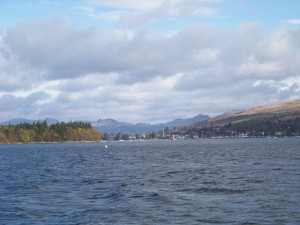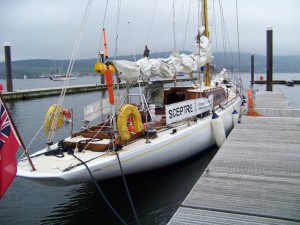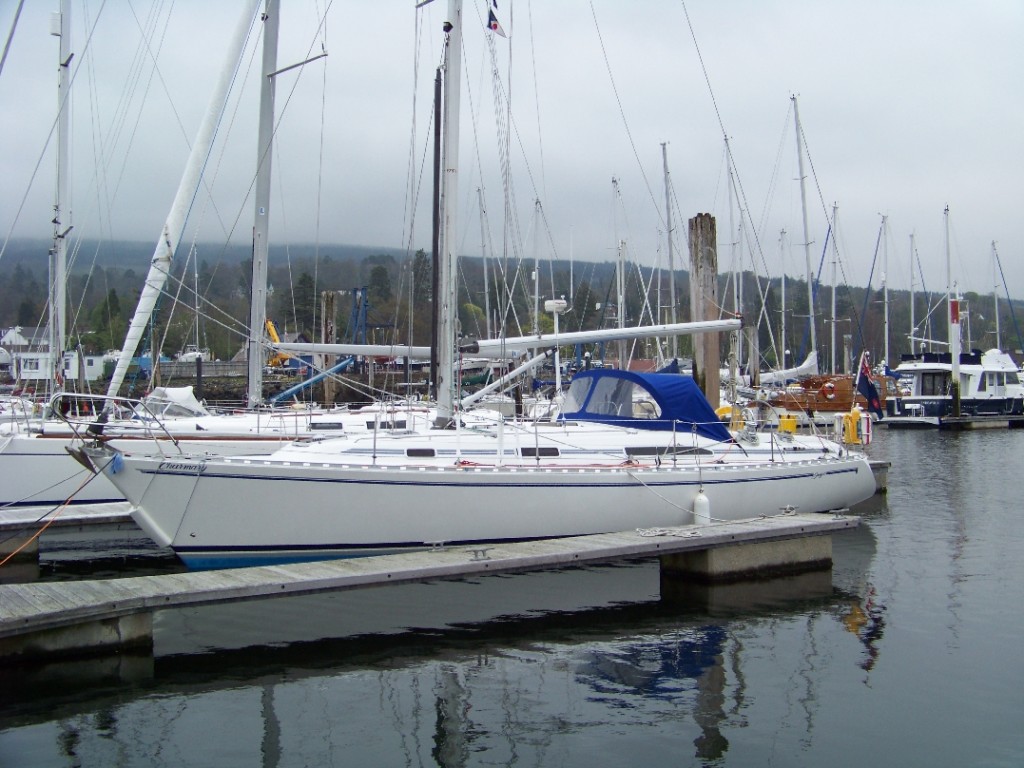Passage from Largs to Rhu: 17.6 miles in 3 hours and five minutes. Motored most of the way, but with a short interlude of sailing.

A fairly short passage from Largs to our mooring at Rhu. We left fairly early at 6.35am with a forecast of lighter winds early morning. In the afternoon, stronger winds were forecast – again …… It was generally fairly quiet, but we managed to sail a for 45 minutes or so in the middle before the wind dropped again. it did gust back up to around a F5-6 at the end, but this was just as we were trying to come into the marina to make life more interesting. Still at least there weren’t any nuclear subs coming out of Faslane to make things even more interesting! We headed into the marina for a few days rather than straight onto our mooring – just to make it easier to get ashore and do things.
The afternoon was spent booking a car which we will collect tomorrow. The forecast for the next few days looks much better for cars than boats. We also went for a walk into Helensburgh – the birthplace of the inventor of the television – John Logie Baird.
Sunday/Monday 5/6th May
We collected a hire car from the airport and then headed via Loch Lomond to Loch Goilhead to stay with Phil and Sarah at their new house. From the airport it took just under an hour to Loch Goilhead and despite damp, misty weather, it was still a spectacular drive – particularly the last part from the ‘Rest and be Thankful’ down into Loch Goilhead. The ‘Rest and be Thankful’ is an expression carved on a stone by the soldiers who built the original road in 1753. It is the highest point of the pass and is so-named as it is said that the climb is so steep that when you reach the top you should rest and be thankful. We can now rest and be thankful thanks to a burger van parked in the car park at the top of the pass! The original stone fell into disrepair and has been replaced by a commemorative stone.
From Phil and Sarah’s we drove back to Helensburgh and, after a lunch of haggis, neeps and tatties, we went to Hill House. This is a house designed by Charles Mackintosh for the publisher Walter Blackie. The house was built between 1902 and 1904 and Mackintosh and his wife designed the house and all the interior decoration. It is considered one of Mackintosh’s greatest works and was donated in 1982 to the National Trust of Scotland who now manage it.

On returning to the marina, we found that berthed at the end of the pontoon was Sceptre. She has been restored and is now preserved by a society – the Sceptre Preservation Trust. She is a 12 metre – built in 1957 to challenge for the America’s Cup. She was built at Holy Loch and shipped out to the USA to challenge against Columbia. This was the first challenge for the America’s Cup since 1937 – the longest period of inactivity in cup challenges. The pre-war J-class was considered too expensive to use for the c0mpetition and so the 12 metre class was chosen. Sceptre was the first 12 metre built specifically to challenge for the America’s Cup. She was unfortunately soundly beaten by Columbia, though not as badly as the next challenge by Sovereign in 1962.

